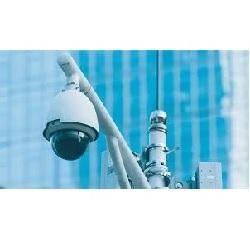Notifications

6 minutes, 5 seconds
-235 Views 0 Comments 0 Likes 0 Reviews

In an era where security concerns are at an all-time high, smart surveillance systems have emerged as an indispensable solution for businesses, government institutions, and homeowners. These advanced systems utilize AI-driven analytics, cloud computing, and IoT integration to provide real-time monitoring, threat detection, and automated responses to security incidents.
Smart surveillance systems go beyond traditional CCTV cameras by incorporating artificial intelligence, facial recognition, motion sensors, and remote access capabilities. These systems are designed to enhance security through automated monitoring, data analysis, and seamless integration with smart home and business security infrastructures.
Modern smart surveillance systems utilize AI and machine learning to differentiate between normal activities and potential threats. These technologies enhance the system’s ability to recognize suspicious behavior, unauthorized access, and unusual movement patterns.
Unlike traditional surveillance, smart surveillance systems offer instant notifications to security personnel or homeowners when a security breach is detected. These alerts can be sent via mobile applications, emails, or SMS.
With cloud integration, users can access live feeds and recorded footage from anywhere in the world. This eliminates the risk of losing critical footage due to hardware failure or tampering.
Advanced smart surveillance systems employ facial recognition and biometric authentication to allow or restrict access to designated areas, enhancing security at corporate offices, airports, and government facilities.
Smart surveillance cameras can detect motion and suspicious activities, triggering automated responses such as turning on alarms, sending alerts to security teams, or activating emergency protocols.
With infrared sensors and thermal imaging, these systems can capture clear footage even in complete darkness, making them ideal for 24/7 surveillance.
Smart surveillance seamlessly integrates with IoT-enabled security devices, including smart locks, door sensors, and alarm systems, creating a comprehensive security network for homes and businesses.
By leveraging AI-powered analytics, these systems can predict potential security threats and prevent crimes before they occur.
While the initial investment in smart surveillance systems may be higher, they reduce the need for manual security personnel, lowering long-term costs.
From small residential properties to large-scale commercial complexes, smart surveillance systems can be tailored to meet specific security requirements.
High-definition recordings with time-stamped footage provide crucial evidence in case of investigations, making it easier to identify suspects and analyze security breaches.
With mobile app integration, users can monitor their property remotely, control camera angles, and receive real-time alerts, ensuring security from anywhere in the world.
Businesses utilize smart surveillance systems to monitor employee activities, prevent unauthorized access, and ensure workplace safety.
Retailers benefit from real-time theft detection, facial recognition for blacklisted individuals, and foot traffic analysis to enhance security and customer experience.
Hospitals and clinics deploy these systems to monitor patient safety, restrict access to sensitive areas, and improve overall security.
Government agencies use AI-powered surveillance systems for traffic monitoring, crowd control, and law enforcement assistance.
Homeowners integrate smart surveillance systems with smart doorbells, security alarms, and motion sensors to safeguard their properties.
When selecting a smart surveillance system, consider the following factors:
Camera Resolution and Field of View: Higher resolutions provide clearer images.
AI Capabilities: Look for facial recognition, motion detection, and behavior analytics.
Cloud vs. Local Storage: Cloud-based options offer remote access and increased data security.
Integration with Other Security Devices: Ensure compatibility with IoT and smart home ecosystems.
Budget and Installation Requirements: Balance features and affordability for optimal security.
With advancements in AI, 5G connectivity, and edge computing, the future of smart surveillance systems is promising. We can expect more accurate threat detection, improved automation, and seamless integration with emerging technologies.
Smart surveillance systems are revolutionizing security by offering AI-driven analytics, remote access, and real-time threat detection. Investing in a cutting-edge smart surveillance system ensures better safety, crime prevention, and efficient monitoring for both residential and commercial applications.

